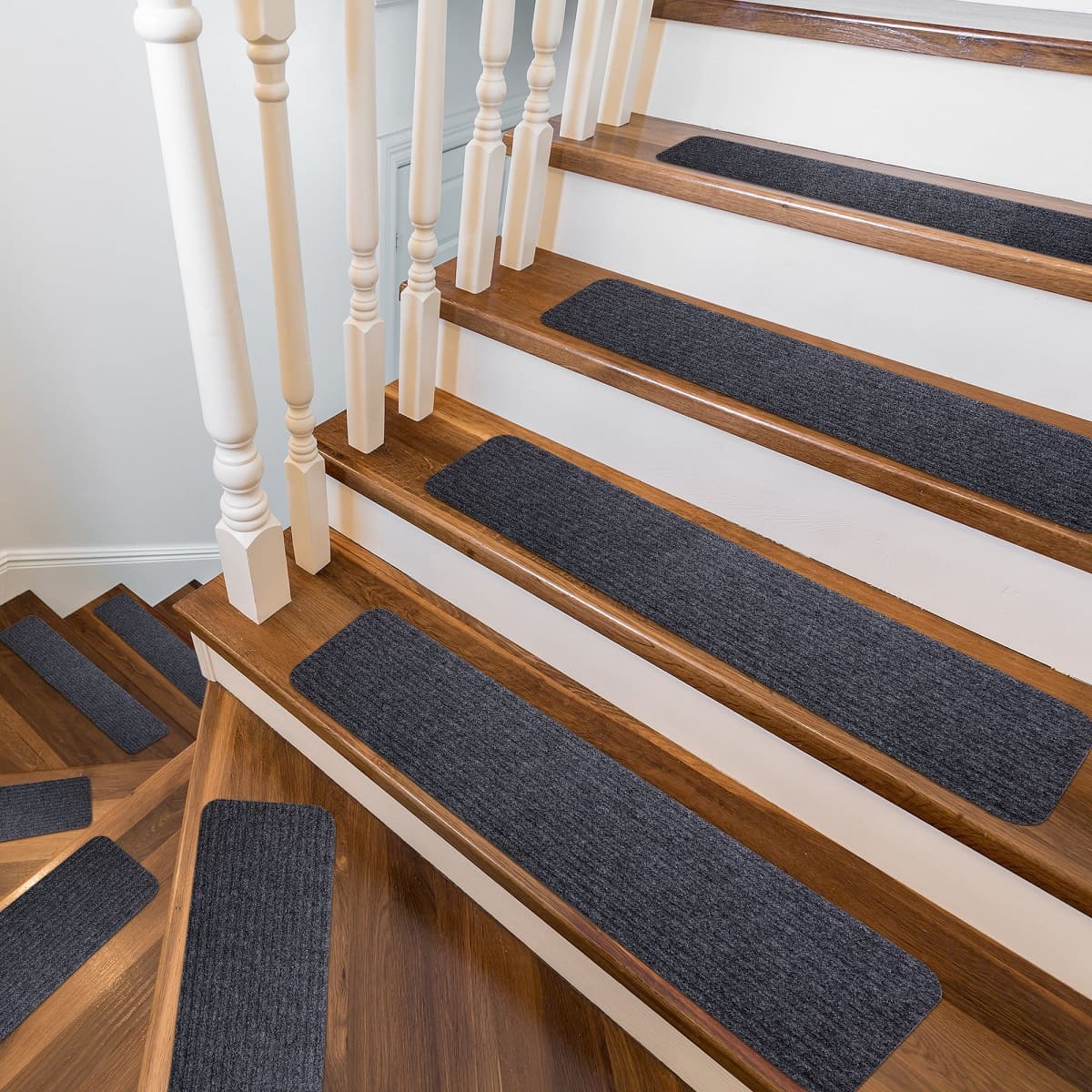

Articles
What To Put On Stairs Instead Of Carpet
Modified: February 23, 2024
Looking for alternatives to carpet on stairs? Read our informative articles for ideas and inspiration on what to put on your stairs instead of carpet.
(Many of the links in this article redirect to a specific reviewed product. Your purchase of these products through affiliate links helps to generate commission for Storables.com, at no extra cost. Learn more)
Introduction
When it comes to decorating your home, the stairs often play a crucial role in setting the overall tone and style. While carpeted stairs are a popular choice, they may not always be the best fit for every homeowner. Whether you have pets that shed, family members with allergies, or you simply want to switch up the look of your stairs, there are plenty of alternatives to consider.
In this article, we will explore various alternatives to carpeted stairs that can elevate the aesthetic appeal and functionality of your staircase. From hardwood and laminate flooring to natural fiber runners and non-slip adhesive strips, we will cover a wide range of options to suit different preferences and budgets.
Before diving into the alternatives, it is important to note that safety should always be a top consideration when choosing materials for your stairs. Slip-resistant surfaces, secure installation, and proper maintenance are key aspects to ensure the safety of anyone using the stairs.
Now, let’s dive into the exciting world of alternatives to carpeted stairs and discover the options that can transform your staircase into a stunning focal point of your home.
Key Takeaways:
- Elevate your staircase with alternatives to carpeted stairs, from timeless hardwood to sleek glass, each offering unique benefits to match your style and budget.
- Prioritize safety while enhancing your staircase with non-slip options like adhesive strips, ensuring a stunning and secure focal point for your home.
Hardwood Flooring
Hardwood flooring is a classic and timeless option that can bring elegance and sophistication to your staircase. With its natural beauty and durability, hardwood is a popular choice for homeowners looking to replace carpeted stairs.
One of the main advantages of hardwood flooring is its versatility. You can choose from a variety of wood species, such as oak, maple, or cherry, each offering unique characteristics and colors. This allows you to match your stairs to the existing hardwood flooring in your home or create a contrasting look. Additionally, hardwood can be stained or painted to achieve the desired finish and style.
When it comes to maintenance, hardwood stairs require regular cleaning and occasional refinishing to keep them looking their best. Sweeping or vacuuming away dust and debris and using a hardwood floor cleaner will help maintain the shine and beauty of the wood. Minor scratches or dents can be repaired through sanding and refinishing, making hardwood a long-lasting and practical option.
In terms of safety, hardwood stairs can be enhanced with non-slip treads or adhesive strips to prevent slips and falls. These can be discreetly installed and provide additional traction without compromising the aesthetic appeal of the hardwood.
Hardwood flooring does come with a higher upfront cost compared to carpet. However, its durability and longevity often make it a worthwhile investment in the long run. Furthermore, hardwood stairs can increase the value of your home and appeal to potential buyers if you ever decide to sell.
Whether you prefer a traditional, rustic, or modern style, hardwood flooring on your stairs can bring warmth, character, and visual interest to your space. Its natural grain and texture add a touch of beauty that is hard to replicate with other materials. Consider hardwood flooring as an elegant and durable alternative to carpeted stairs.
Laminate Flooring
Laminate flooring is another popular alternative to carpeted stairs that offers both style and practicality. It is a cost-effective option that can mimic the look of hardwood or stone, giving your stairs a high-end appearance without the hefty price tag.
One of the main advantages of laminate flooring is its durability and resistance to wear and tear. Laminate is designed to withstand heavy foot traffic, making it an ideal choice for stairs. It is also stain-resistant, which can be a bonus if you have children or pets who may accidentally spill liquids on the stairs.
Laminate flooring comes in a wide range of designs and colors, allowing you to find the perfect match for your home decor. From realistic wood grain patterns to sleek and modern designs, there is a laminate option to suit every taste and style. Additionally, laminate is relatively easy to install, making it a feasible DIY project for homeowners with some basic tools and skills.
Maintenance of laminate flooring on stairs is relatively simple. Regular sweeping or vacuuming, combined with occasional damp mopping, is usually sufficient to keep the stairs clean and looking their best. It is important to avoid excessive moisture, as laminate can swell and become damaged if exposed to water for extended periods.
In terms of safety, laminate flooring can be enhanced with non-slip adhesive strips or stair treads to provide extra grip and prevent slips and falls. These safety measures can be easily installed without compromising the aesthetic appeal of the laminate.
Another advantage of choosing laminate flooring for your stairs is its affordability. Laminate is generally less expensive than hardwood or other flooring materials, making it a budget-friendly option for homeowners looking to update their stairs without breaking the bank.
Laminate flooring on stairs can bring a sleek and stylish look to your home, elevating its overall design. It is a versatile and durable choice that offers the benefits of easy maintenance and affordability. Consider laminate flooring as a practical and attractive alternative to carpeted stairs.
Tile Flooring
Tile flooring is a versatile option that can add a touch of elegance and sophistication to your staircase. With its wide range of styles, colors, and patterns, tile offers endless design possibilities for your stairs.
One of the main advantages of tile flooring is its durability. Tiles are highly resistant to wear and tear, making them an ideal choice for high-traffic areas like stairs. They are also stain-resistant and easy to clean, making maintenance a breeze.
When it comes to design, tile offers endless possibilities. You can choose from various materials, such as ceramic, porcelain, or natural stone, each with its own unique look and characteristics. From timeless and traditional designs to modern and contemporary patterns, tile allows you to create a customized and eye-catching staircase.
In terms of safety, it is important to choose textured or slip-resistant tiles for the stairs to prevent slips and falls. This will ensure that the surface has sufficient grip, even when it is wet. Additionally, using non-slip adhesive strips or stair treads can provide extra traction for added safety.
Tile flooring is also known for its longevity, making it a wise investment for your stairs. While the initial cost of tile installation may be higher compared to other options, its durability and timeless appeal can outweigh the upfront expenses. Furthermore, tile stairs can add value to your home and make a lasting impression on potential buyers.
When it comes to installation, it is recommended to hire a professional to ensure precise and proper placement of the tiles. This will ensure that the stairs are safe and secure, with a seamless and visually pleasing appearance.
Tile flooring on stairs can create a stunning focal point in your home. Its durability, design options, and easy maintenance make it a popular choice for homeowners seeking a stylish and long-lasting alternative to carpeted stairs.
Vinyl Flooring
Vinyl flooring is a versatile and affordable alternative to carpeted stairs that offers durability and easy maintenance. With its wide range of designs and styles, vinyl can transform your staircase into a stylish and functional focal point of your home.
One of the main advantages of vinyl flooring is its durability. Vinyl is resistant to scratches, stains, and wear, making it a suitable option for high-traffic areas like stairs. It is also moisture-resistant, which is a significant advantage over other materials, as it can withstand spills or accidents without warping or damage.
Vinyl flooring comes in various styles, including stone, wood, and tile patterns, allowing you to achieve the desired look for your stairs. The designs are often realistic and visually appealing, mimicking the appearance of more expensive materials like hardwood or ceramic tiles. Additionally, vinyl is available in a range of colors, enabling you to coordinate your stair decor with the overall theme of your home.
Maintenance of vinyl flooring on stairs is relatively simple. Regular sweeping or vacuuming, coupled with occasional damp mopping, is usually sufficient to keep the stairs clean and free from dirt and debris. Vinyl is known for its easy maintenance, saving you time and effort in the long run.
In terms of safety, vinyl flooring can be enhanced with non-slip adhesive strips or stair treads to provide additional traction and prevent slips and falls. These safety measures can be installed without compromising the aesthetic appeal of the vinyl.
Another advantage of vinyl flooring is its affordability. In comparison to other flooring options, vinyl is relatively inexpensive. It offers a cost-effective way to update your stairs without compromising on style or quality. Installing vinyl on your stairs can give them a fresh and modern look while also fitting your budget.
Vinyl flooring is a practical and appealing alternative to carpeted stairs. Its durability, easy maintenance, wide range of designs, and affordability make it an excellent choice for homeowners looking for a hassle-free and budget-friendly option to enhance the beauty and functionality of their stairs.
Read more: How To Put Carpet On Stairs
Natural Fiber Runners
If you’re looking for a softer alternative to carpeted stairs, natural fiber runners can be a great choice. Made from materials like sisal, jute, or seagrass, these runners add texture and warmth to your staircase while maintaining a natural and organic aesthetic.
One of the main advantages of natural fiber runners is their sustainability and eco-friendliness. These materials are derived from renewable sources, making them a more environmentally conscious option compared to synthetic carpeting. Additionally, natural fiber runners are known for their durability, ensuring that your stairs withstand daily use.
The inherent texture of natural fiber runners adds visual interest to your staircase, creating a unique and rustic charm. Moreover, the natural colors and variations in the fibers add depth and character, allowing you to incorporate a touch of nature into your home’s design.
While natural fiber runners provide a warm and cozy feel underfoot, they do require regular maintenance. Vacuuming and spot cleaning should be done regularly to remove dirt and prevent staining. It is important to note that natural fiber runners are susceptible to moisture damage, so it’s essential to address spills or moisture promptly to avoid any long-term issues.
In terms of safety, natural fiber runners can be enhanced with non-slip rug pads or adhesive strips to ensure secure footing. These additions will help prevent slipping and tripping on the stairs.
Another advantage of natural fiber runners is their versatility in matching various interior styles. Whether your home has a coastal, farmhouse, or bohemian theme, natural fiber runners can complement the overall aesthetic and bring a touch of natural beauty to your staircase.
Natural fiber runners are an excellent alternative to traditional carpeted stairs, providing a cozy and eco-friendly option. With their durability, texture, and ability to blend seamlessly with different design styles, they can enhance the overall ambiance and charm of your home.
Rubber Stair Treads
Rubber stair treads are a practical and functional alternative to carpeted stairs, particularly in areas that require slip resistance and durability. Made from durable rubber material, these treads offer excellent traction and protection against slips and falls.
One of the main advantages of rubber stair treads is their exceptional non-slip properties. The textured surface of rubber provides a high level of grip, making it an ideal choice for stairs in high-traffic areas or places prone to moisture, such as basements or outdoor staircases. Rubber treads can help eliminate the risk of accidents and provide peace of mind, especially in households with young children or elderly individuals.
Not only do rubber stair treads enhance safety, but they are also highly durable and resistant to wear and tear. Rubber is known for its longevity and ability to withstand heavy use. It is also resistant to moisture, stains, and scratches, making it a low-maintenance option for your stairs.
Rubber stair treads are available in a variety of colors and designs, allowing you to choose the style that best suits your home decor. From solid colors to patterned textures, there are options to match any aesthetic preference. Some rubber treads even feature built-in nosing for added visual appeal and to improve the durability of the edges.
Installation of rubber stair treads is relatively straightforward. They can be easily affixed to the existing stairs using adhesive or screws, providing a secure and stable foundation. It is important to follow the manufacturer’s guidelines for proper installation to ensure optimal performance and safety.
In addition to being practical and safe, rubber stair treads also offer noise reduction benefits. The rubber material absorbs sound, reducing the impact of footsteps and minimizing noise transmission between floors. This can be particularly beneficial in multi-story homes or commercial buildings.
Rubber stair treads provide a durable, non-slip solution for your stairs. With their exceptional grip, durability, and easy maintenance, they are a popular choice for both residential and commercial settings. Consider rubber stair treads as a reliable and practical alternative to carpeted stairs.
Consider installing hardwood, laminate, or vinyl flooring on your stairs for a durable and easy-to-clean alternative to carpet. Adding a non-slip tread or runner can also provide traction and style.
Paint or Stain
If you’re looking for a budget-friendly and creative way to revamp your stairs, painting or staining them can be a fantastic option. This alternative allows you to customize the look of your stairs according to your personal style and preferences.
Painting your stairs offers endless possibilities when it comes to color and design. You can choose a bold and vibrant hue to make a statement, or opt for a neutral and subtle shade for a more classic and timeless look. With paint, you can also experiment with patterns, stencils, or geometric designs to add a unique touch to your staircase.
Staining, on the other hand, allows you to enhance the natural beauty of the wood while giving it a fresh and updated appearance. Stains come in various shades, ranging from light to dark, allowing you to achieve the desired level of richness and depth. Staining can also bring out the unique grain patterns of the wood, adding character and warmth to your stairs.
Both painting and staining offer relatively easy maintenance. Regular cleaning with a mild detergent and water is usually sufficient to keep your stairs looking their best. However, it’s essential to touch up any areas that may experience heavy wear or damage to ensure the longevity of the finish.
To ensure safety, it is recommended to use non-slip additives or anti-slip coatings on painted or stained stairs. These products provide an extra layer of grip and help reduce the risk of slipping, especially in high-traffic areas.
One of the advantages of painting or staining your stairs is the cost-effectiveness. It is a more affordable alternative compared to other flooring options or installing new materials. It can also be a fun and creative DIY project, allowing you to unleash your artistic side and personalize your staircase.
Before painting or staining your stairs, it is important to properly prepare the surface by sanding and cleaning it. It is also advisable to use high-quality paint or stain products to ensure a durable and long-lasting finish. If you’re unsure about how to proceed, consulting a professional can help you achieve the desired results.
Painting or staining your stairs provides a cost-effective and customizable alternative to carpeted stairs. It allows you to unleash your creativity and transform your staircase into a focal point of your home. Consider this option for a budget-friendly and personalized approach to staircase renovation.
Concrete or Stone
If you’re aiming to achieve a modern and minimalist aesthetic for your staircase, consider using concrete or stone as an alternative to carpeted stairs. Concrete and stone offer a sleek and durable option that can elevate the overall look of your home.
Concrete stairs are known for their strength and durability. They can withstand heavy foot traffic and are highly resistant to wear and tear. With concrete, you have the option to leave it exposed for a sleek and industrial look or add finishes such as staining or polishing to enhance its appearance. Concrete stairs provide a clean and contemporary feel, perfect for modern and minimalist interiors.
Stone stairs, such as marble or granite, exude elegance and sophistication. They add a touch of luxury to your home and can become a focal point of your interior design. Stone stairs can be cut and finished in various ways to achieve the desired texture and style. From polished marble with a high-gloss finish to honed limestone with a matte appearance, stone stairs offer versatility and timeless beauty.
Both concrete and stone stairs require professional installation due to their structural requirements. It is essential to consult with experts to ensure proper construction and installation techniques are followed to ensure safety and longevity.
In terms of maintenance, both concrete and stone stairs are highly durable and relatively easy to clean. Regular sweeping or vacuuming and occasional damp mopping will help keep them looking their best. However, it is essential to address spills promptly to avoid any staining or damage.
Another advantage of concrete and stone stairs is their ability to regulate temperature. They can absorb and retain heat, keeping your staircase cool in the summer and warm in the winter. This can be particularly beneficial in regions with extreme weather conditions.
In terms of safety, it is important to ensure adequate traction on concrete or stone stairs to prevent slipping. Using non-slip additives or applying anti-slip coatings will provide extra grip and reduce the risk of accidents. Additionally, adding handrails can further enhance safety, especially for those with mobility concerns.
Concrete and stone stairs offer a modern and sophisticated alternative to carpeted stairs. Their durability, versatility, and low-maintenance make them an excellent choice for homeowners looking for a long-lasting and elegant staircase option. Consider concrete or stone stairs to create a striking architectural statement in your home.
Read more: What To Put On Stairs For Dogs
Glass or Plexiglass
For a truly unique and contemporary look, consider using glass or plexiglass as an alternative to carpeted stairs. Glass and plexiglass stairs offer a sleek and modern aesthetic that can create a stunning visual impact in your home.
Glass stairs provide a sense of openness and transparency, making them a popular choice for modern and minimalist designs. With their reflective properties, glass stairs can help maximize natural light and create an illusion of a more spacious area. They also allow for unobstructed views, making them an excellent choice for staircases in areas with beautiful scenery or architectural features.
Plexiglass, also known as acrylic glass, is a transparent yet lighter alternative to traditional glass. It offers similar visual appeal and can be used to create floating or cantilevered stairs. Plexiglass is highly durable, resistant to impacts, and can withstand heavy foot traffic, making it a practical choice for stairs.
Both glass and plexiglass stairs require professional installation due to their structural requirements and precise measurements. It is crucial to consult with experts to ensure proper construction and installation techniques are followed, guaranteeing safety and stability.
Maintaining glass or plexiglass stairs is relatively simple. Regular cleaning with a non-abrasive glass cleaner and a microfiber cloth will help keep them looking clear and pristine. It is essential to avoid using abrasive cleaners or rough materials that may scratch or damage the surface.
In terms of safety, there are specific considerations to keep in mind when using glass or plexiglass for stairs. Ensuring the edges of the stairs are properly finished and rounded can minimize the risk of accidental injuries. Additionally, using anti-slip treads or applying non-slip coatings to the surface can provide better traction.
Glass and plexiglass stairs can be statement pieces in your home, adding a touch of elegance and sophistication. Their sleek, transparent design allows light to pass through, creating a visually stunning effect. Consider glass or plexiglass stairs if you’re looking to make a bold architectural statement and enhance the modern aesthetic of your home.
Metal Accents
If you’re looking to infuse an industrial or modern touch into your stairs, incorporating metal accents is a fantastic alternative to carpeted stairs. Metal accents can add a sleek and contemporary element, creating a visually striking and unique staircase.
One of the main advantages of metal accents is their versatility. Metal materials such as steel, aluminum, or wrought iron can be used in various ways to enhance the overall design of your stairs. From metal balusters to handrails and stair nosings, there are endless possibilities to incorporate metal accents into your staircase.
Metal accents offer both durability and stability, ensuring that your stairs withstand the test of time. Metal balusters provide excellent support, contributing to the overall safety of the staircase. Additionally, metal handrails offer a secure grip and can be customized to fit your desired style and aesthetic.
In terms of maintenance, metal accents are relatively easy to clean and maintain. Regular dusting or wiping with a damp cloth will help keep them looking their best. It is important to note that different metal finishes may require specific care instructions, so it’s essential to follow the manufacturer’s guidelines for proper maintenance.
Safety considerations are important when incorporating metal accents into your stairs. Ensuring that the placement of metal balusters or handrails adheres to building codes and guidelines is necessary to optimize safety. It’s also crucial to ensure that the metal accents are properly installed and securely fastened to avoid any instability or potential hazards.
Metal accents offer a wide range of design possibilities, allowing you to create a customized and eye-catching staircase. Whether you prefer a sleek and minimalist design with stainless steel accents or a more intricate and ornate look with wrought iron details, metal accents can elevate the overall aesthetic of your home.
Metal accents are a stylish and durable alternative to carpeted stairs, providing a contemporary and industrial vibe. Consider incorporating metal balusters, handrails, or stair nosings to infuse your stairs with a touch of elegance and modernity.
Non-Slip Adhesive Strips
If you want to enhance the safety of your stairs without sacrificing the existing material, non-slip adhesive strips are a simple yet effective alternative to carpeted stairs. These strips provide added traction, reducing the risk of slips and falls, particularly on surfaces that may become slippery when wet.
Non-slip adhesive strips are typically made from a durable material with a textured or abrasive surface. They are designed to adhere firmly to the stairs, providing a secure grip for your feet. These strips can be applied to various materials, including wood, laminate, vinyl, or concrete stairs, making them a versatile option for any staircase.
One of the main advantages of non-slip adhesive strips is their ease of installation. Most come with a self-adhesive backing, allowing for quick and straightforward application. Simply peel off the protective backing and press the strip firmly onto the stair surface. It is important to follow the manufacturer’s instructions for proper placement and ensure that the strips are evenly spaced for maximum effectiveness.
Maintenance of non-slip adhesive strips is minimal. Regular cleaning with a mild detergent and water will help remove dirt and debris from the surface. It is important to keep the strips free from any obstructions or loose edges to maintain their functionality.
Non-slip adhesive strips are available in various sizes, shapes, and colors, allowing you to choose an option that suits your stairs’ aesthetics. From clear strips that blend seamlessly with the stair surface to colored strips that add a pop of visual interest, there are options to match any design preference.
One of the key advantages of non-slip adhesive strips is their cost-effectiveness. They provide an affordable solution to enhance stair safety without the need for extensive renovations or replacements. Additionally, if you ever decide to change the look of your stairs in the future, the strips can be easily removed without causing damage to the underlying surface.
Non-slip adhesive strips offer a practical and versatile alternative to carpeted stairs. Whether you have wood, laminate, or concrete stairs, these strips can improve traction and reduce the risk of accidents. Consider non-slip adhesive strips as an affordable and easy-to-install option to enhance the safety of your staircase.
Conclusion
Choosing the right alternative to carpeted stairs can greatly enhance the aesthetic appeal and functionality of your staircase. Whether you prefer the timeless elegance of hardwood flooring, the affordability of laminate, the durability of tile, or the modern look of glass, there are plenty of options to suit your style and budget.
Each alternative comes with its own unique advantages. Hardwood flooring offers durability and versatility, while laminate provides affordability and easy installation. Tile flooring brings elegance and a wide range of design possibilities, while vinyl offers durability and low maintenance. Natural fiber runners add warmth and texture, while rubber stair treads provide slip resistance and protection. Painting or staining allows for creativity and personalization, while concrete or stone bring a modern and sleek look. Glass or plexiglass create a stunning visual impact, while metal accents offer a contemporary touch. Non-slip adhesive strips enhance safety without altering the existing surface.
When choosing an alternative to carpeted stairs, it is crucial to consider factors such as durability, maintenance requirements, safety, and how well it matches your overall home decor. It is also essential to consult with professionals for proper installation and ensure compliance with building codes and guidelines.
Remember, safety should always be a top priority when selecting materials for your stairs, regardless of the aesthetic appeal. Consider non-slip additions, such as adhesive strips or stair treads, to provide extra grip and prevent slips and falls.
In conclusion, upgrading your carpeted stairs with alternative materials offers an opportunity to transform your staircase into a stunning focal point of your home. Whether you opt for the classic charm of hardwood, the sleek simplicity of glass, or the versatility of paint or stain, each alternative provides a unique and visually appealing option. By carefully considering your preferences, budget, and overall home design, you can make an informed decision and create a staircase that reflects your personal style while ensuring safety and durability for years to come.
Frequently Asked Questions about What To Put On Stairs Instead Of Carpet
Was this page helpful?
At Storables.com, we guarantee accurate and reliable information. Our content, validated by Expert Board Contributors, is crafted following stringent Editorial Policies. We're committed to providing you with well-researched, expert-backed insights for all your informational needs.
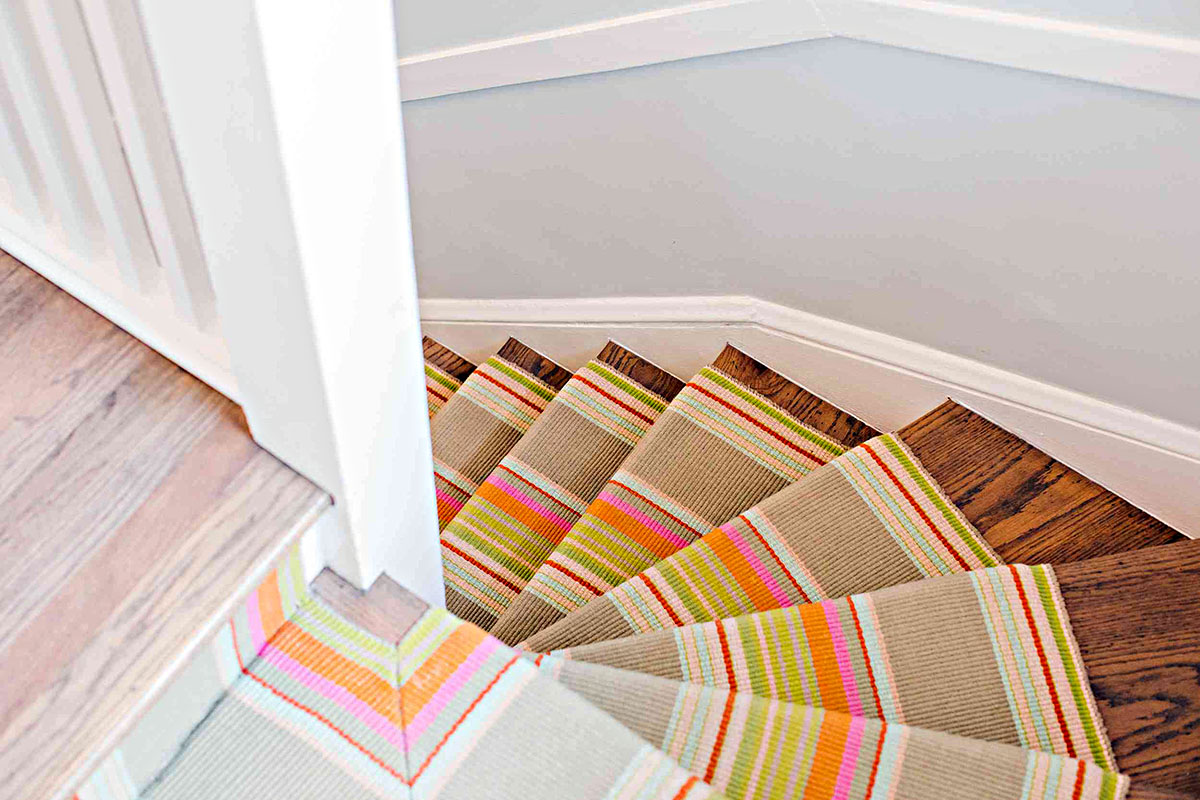
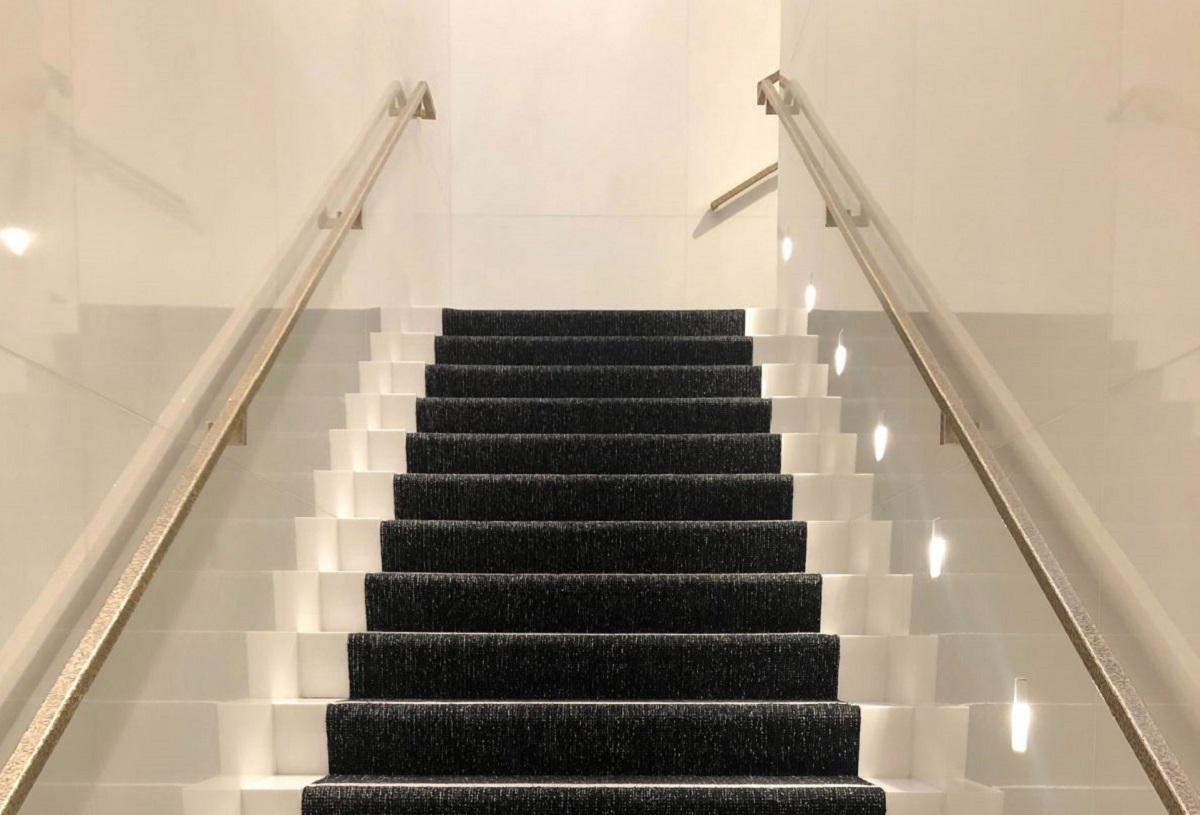
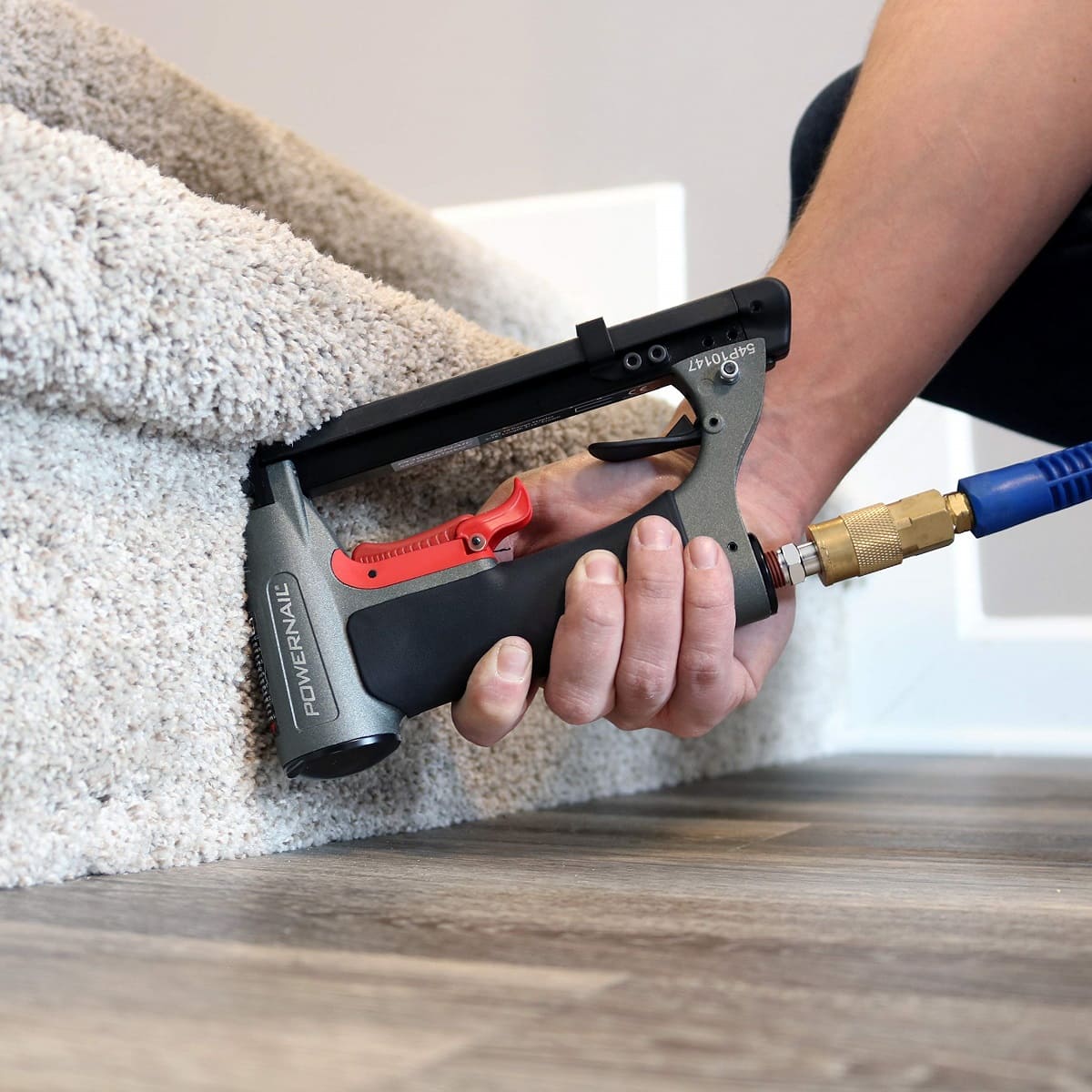
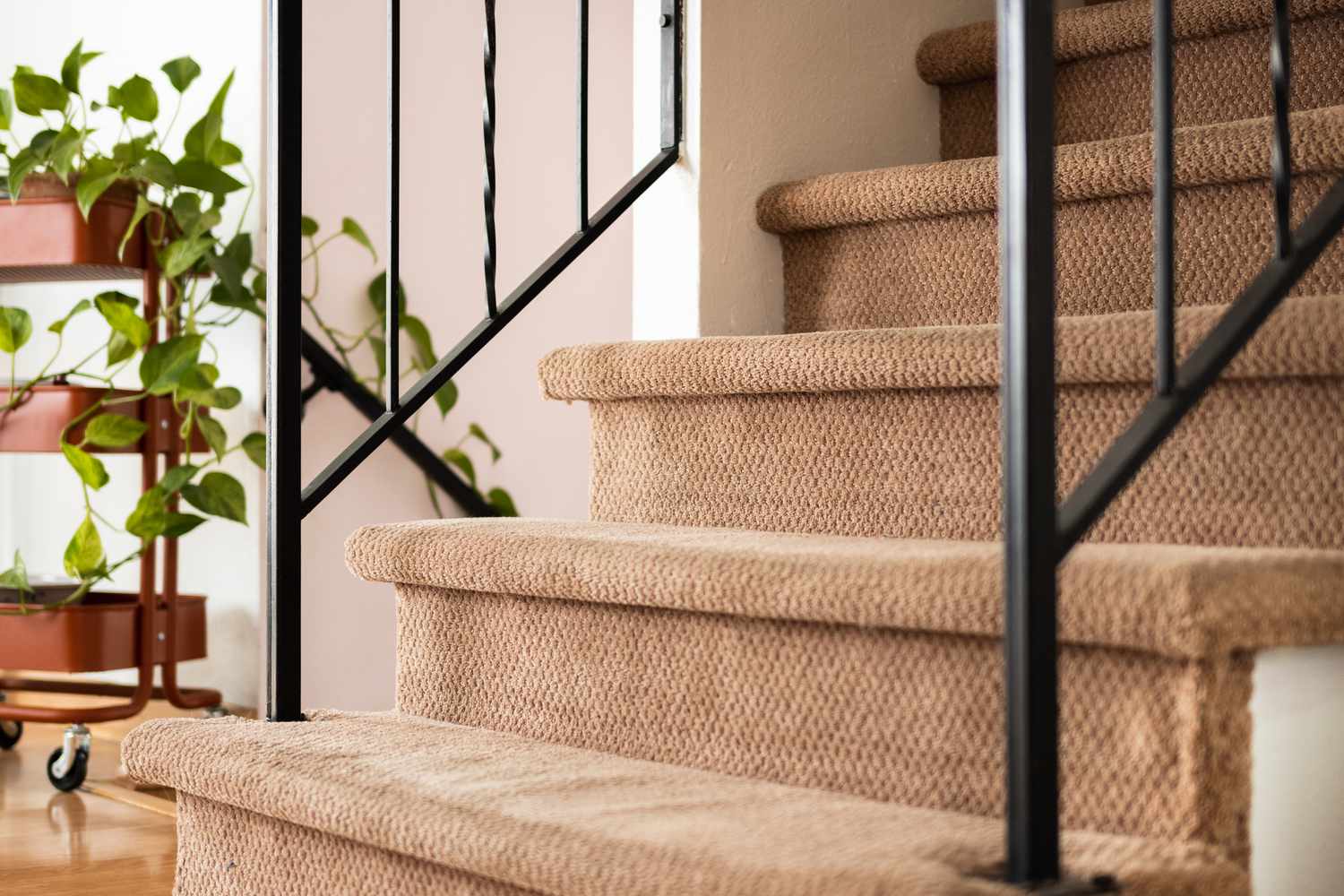
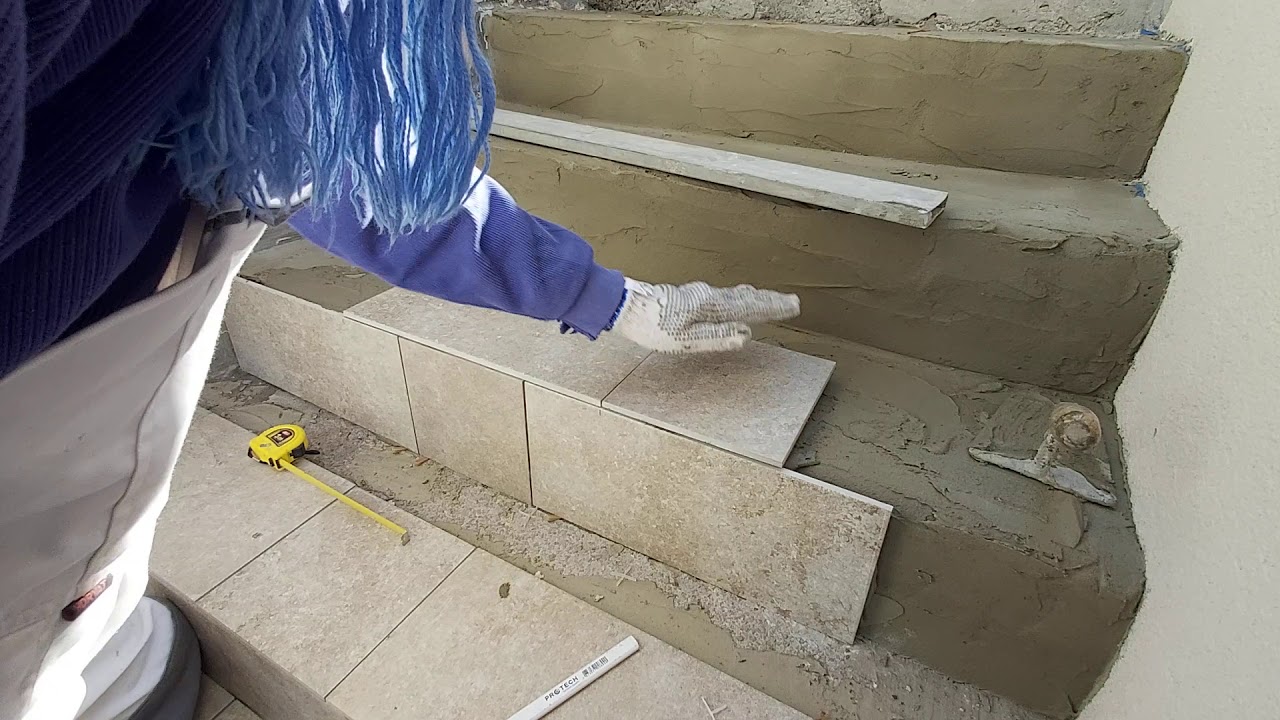
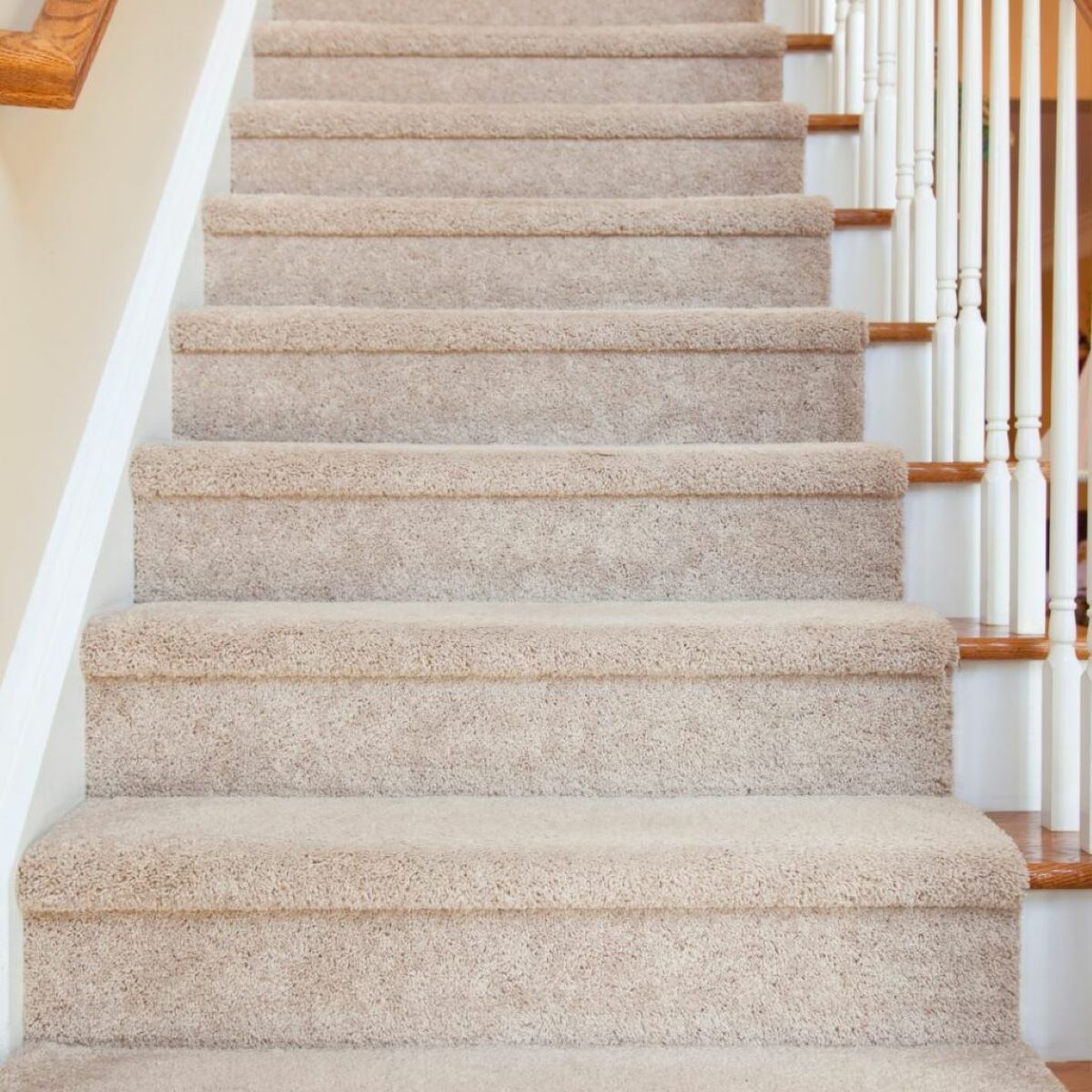
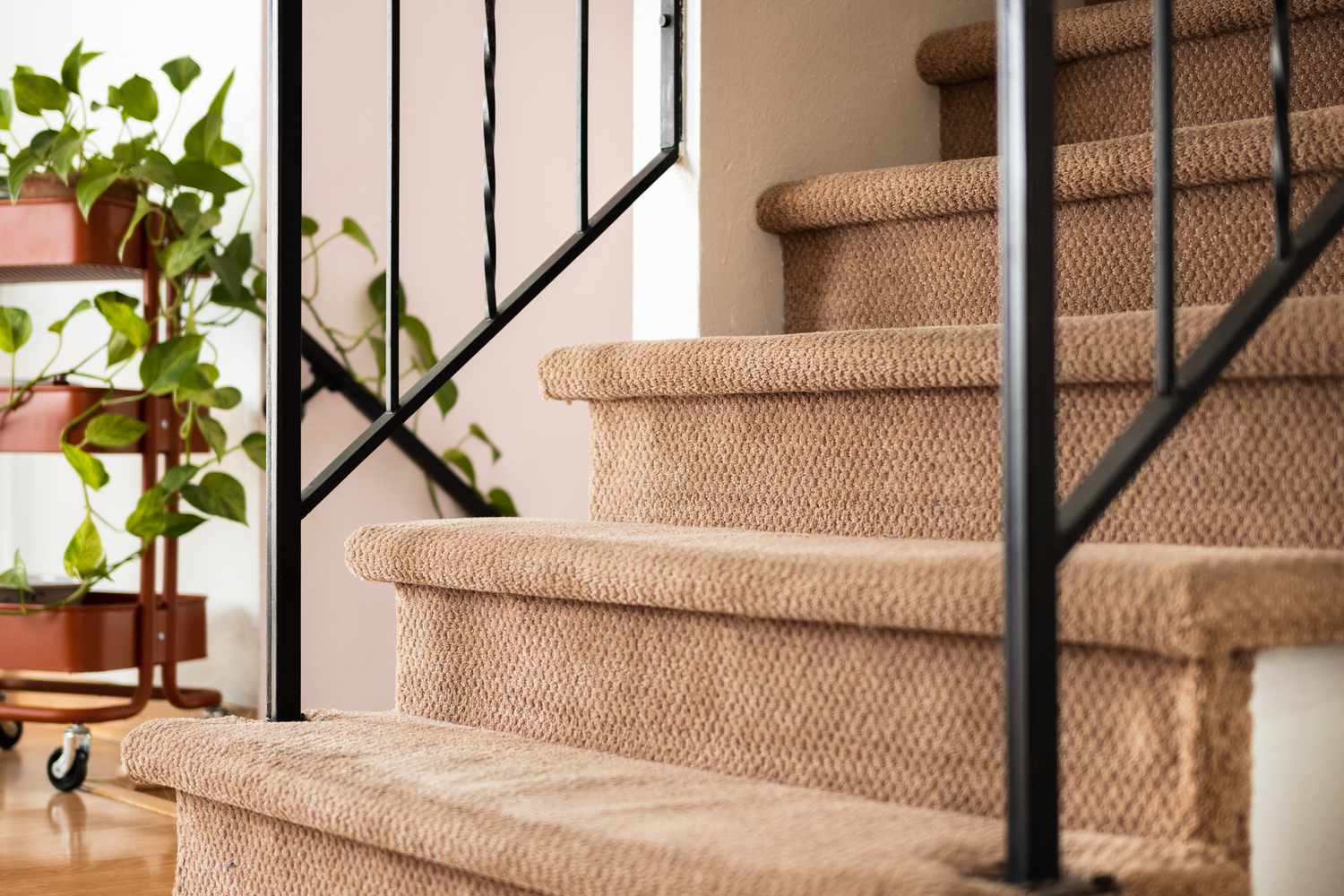
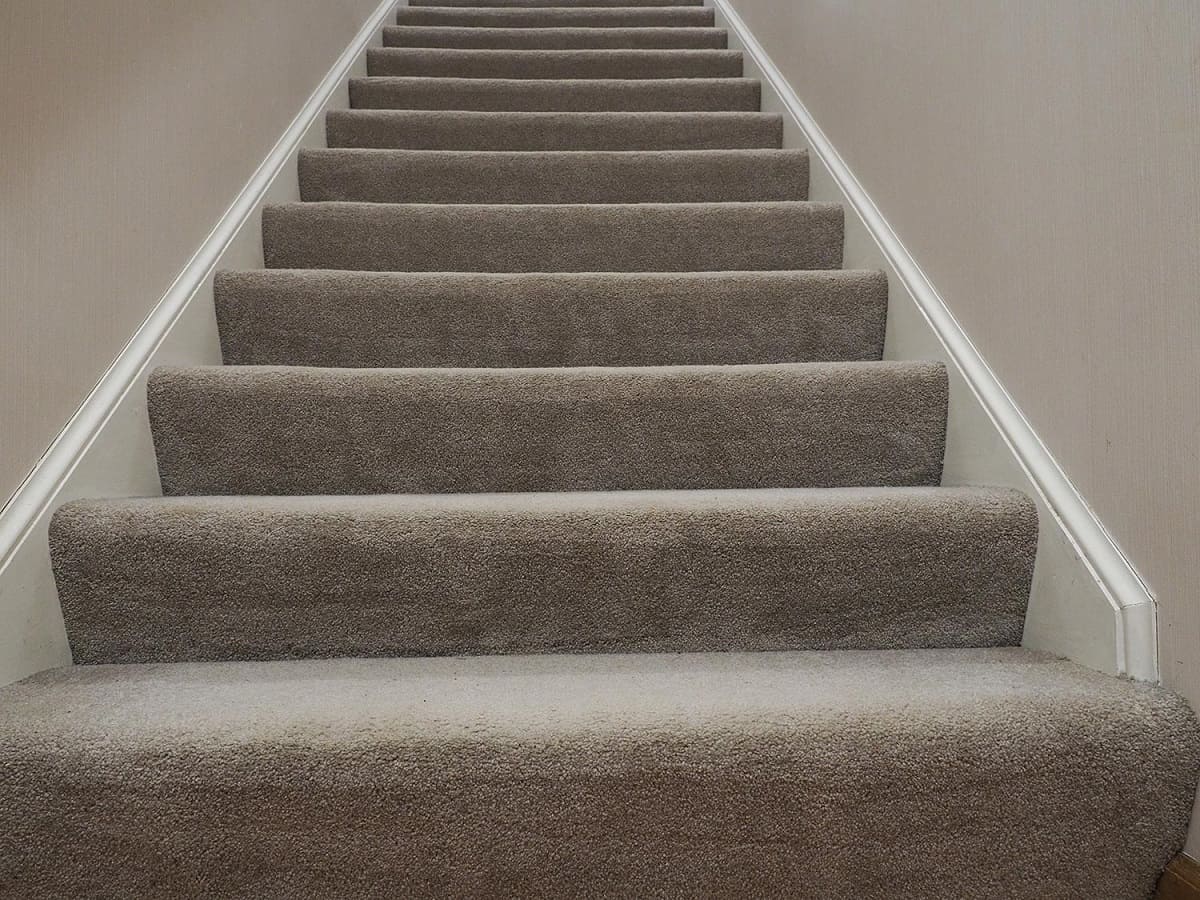
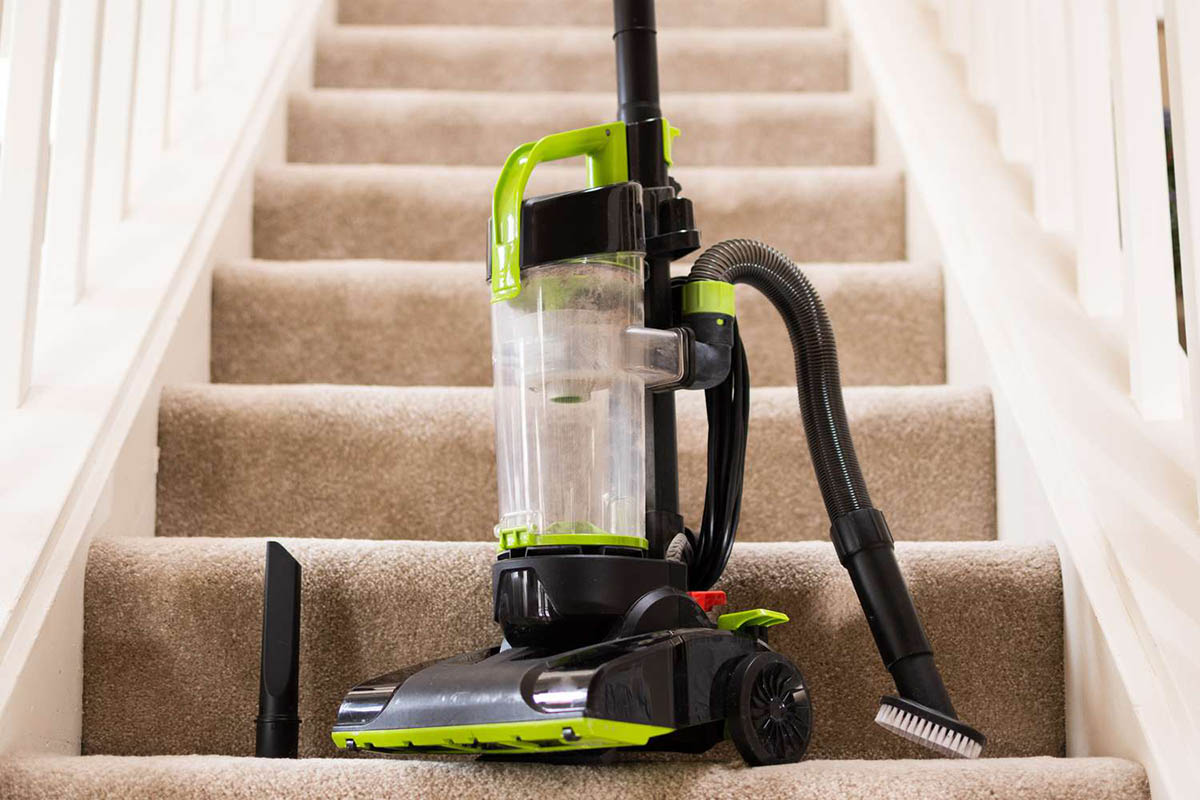
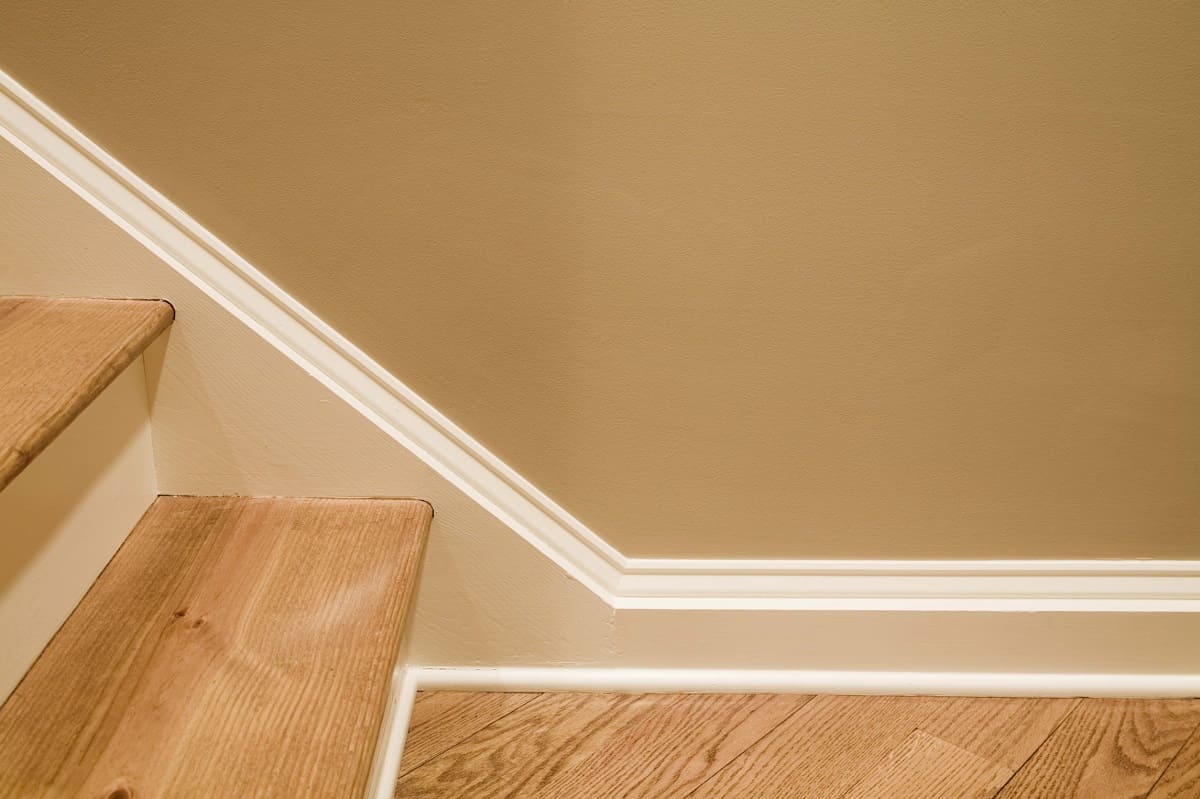
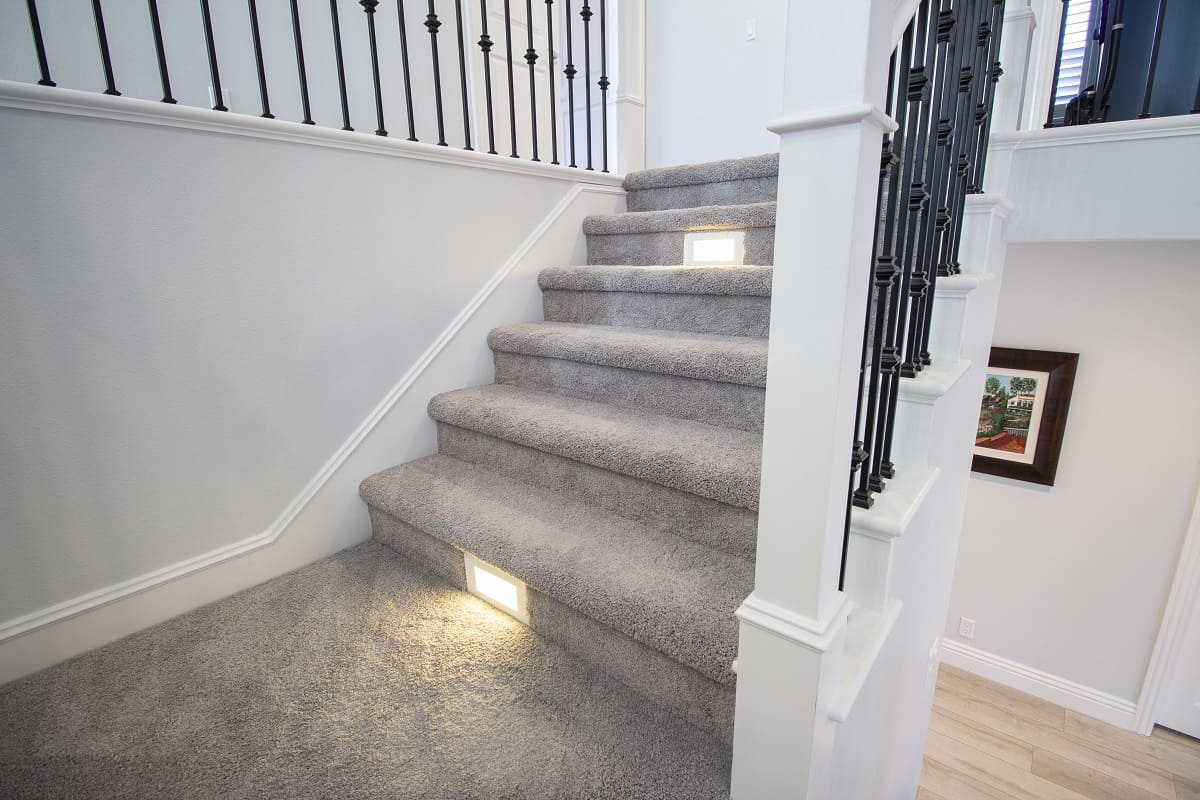
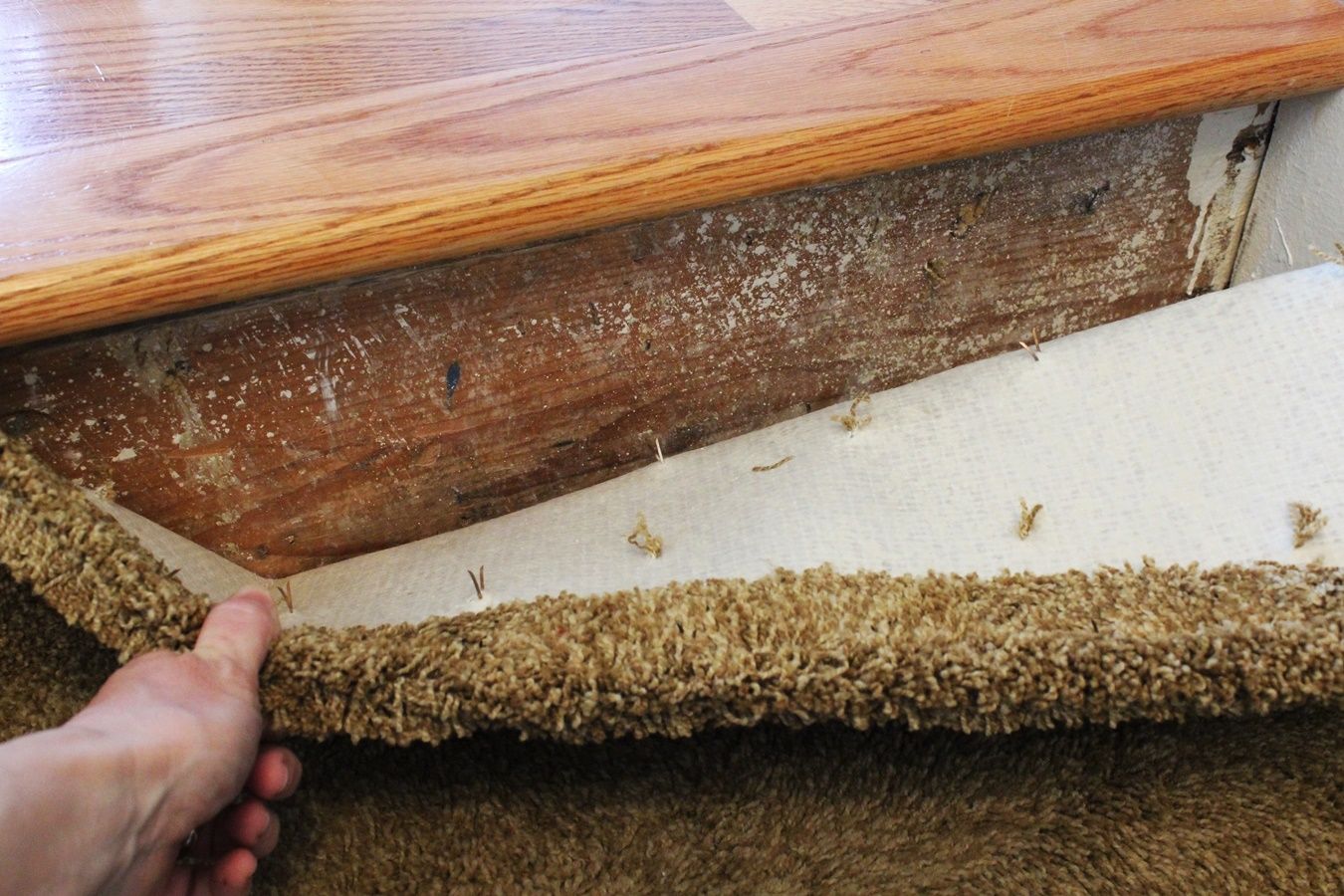
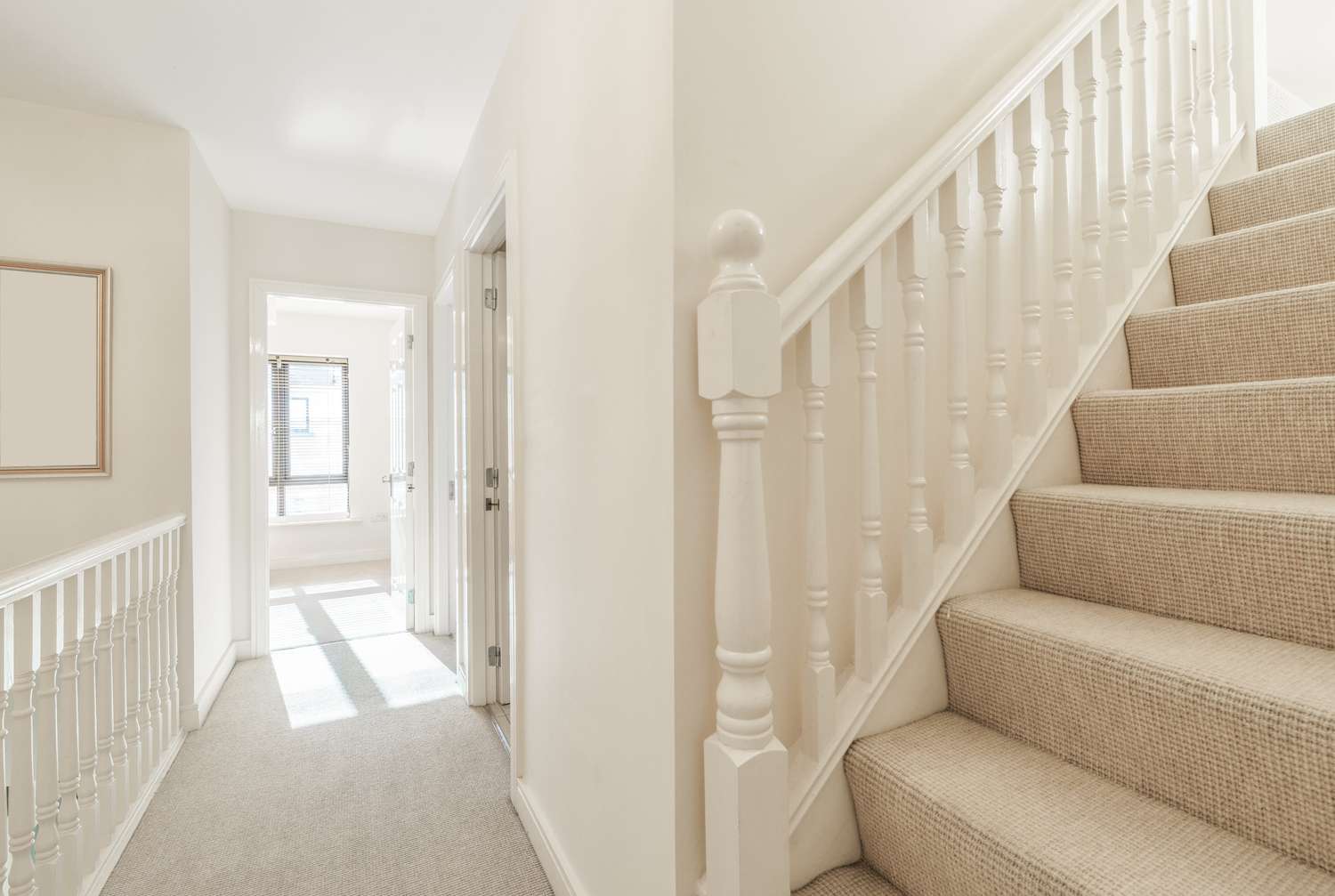

0 thoughts on “What To Put On Stairs Instead Of Carpet”